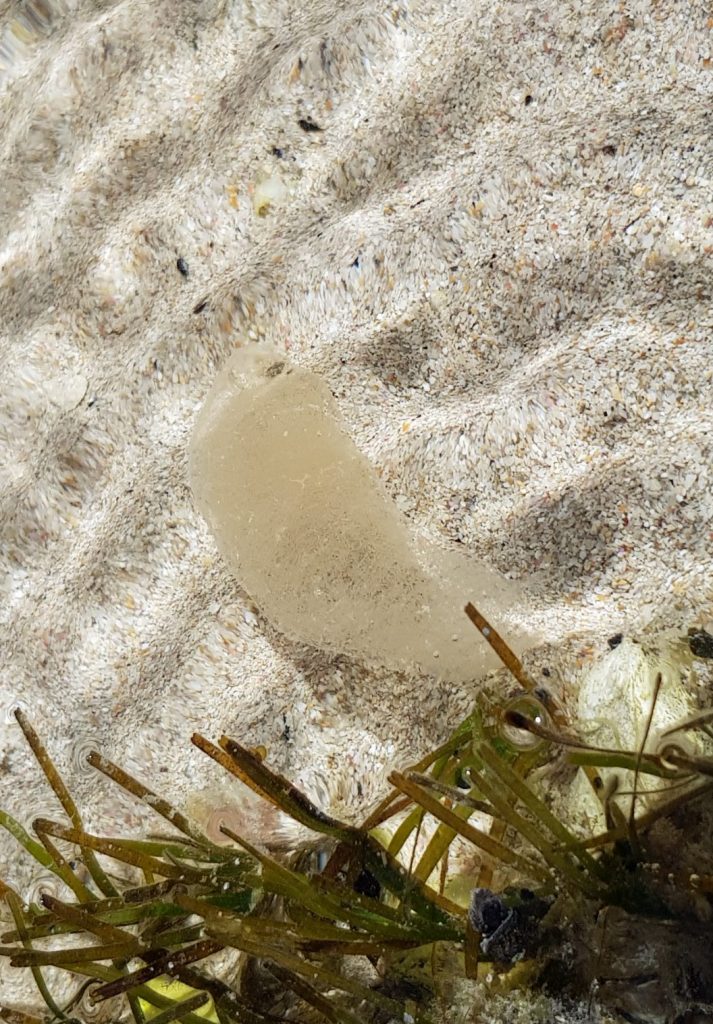Species of the month: Bubble Shell
Earlier in the year we kicked off a series of coastal workshops supported by the Coast Protection Board with a reef ramble at Cape Douglas. We had several interesting and unidentified finds that day and put the call out in our post last month for any clues. Thanks to a marine-keen reader, one of those mysteries has now been solved! Scroll on to find out what creature lays these egg masses.

Philine angasi egg case – Photo: Jess Bourchier 
Philine angasi egg case – Photo: Jess Bourchier
The egg sack above is created by a type of sea slug, Philine angasi. The family to which this species belongs, Philinidae, is known as headshield slugs, and they’re also sometimes called bubble shells.

Philine angasi feeds on bivalves and can grow quite large – up to 15 cm in length. If you’ve spent some time on local beaches and reefs you might be wondering why you’ve never come across one? While they occur widely in sheltered and open coastlines in southern Australia (up as far as NSW), they spend most of their time buried in the sand, only occasionally emerging to the sand’s surface at night. We only saw one egg mass during our reef ramble, but Rose has since been snorkelling close to this site and saw hundreds of the same egg masses in a small area!
Philine angasi has an internal shell that is delicate and transparent, and this is where the name bubble shell comes from. These shells are very fragile and because the animal lives mostly underground it is very rare to find one.
If you’ve found something interesting on the beach or reef, I’m always happy to hear from you! Click here to email me, or copy my email address below.

Heithaus, P, 2009 (Mar 16) Philine angasi from Shark Bay, Western Australia. [Message in] Sea Slug Forum.
Australian Museum, Sydney. Available from http://www.seaslugforum.net/find/22332
